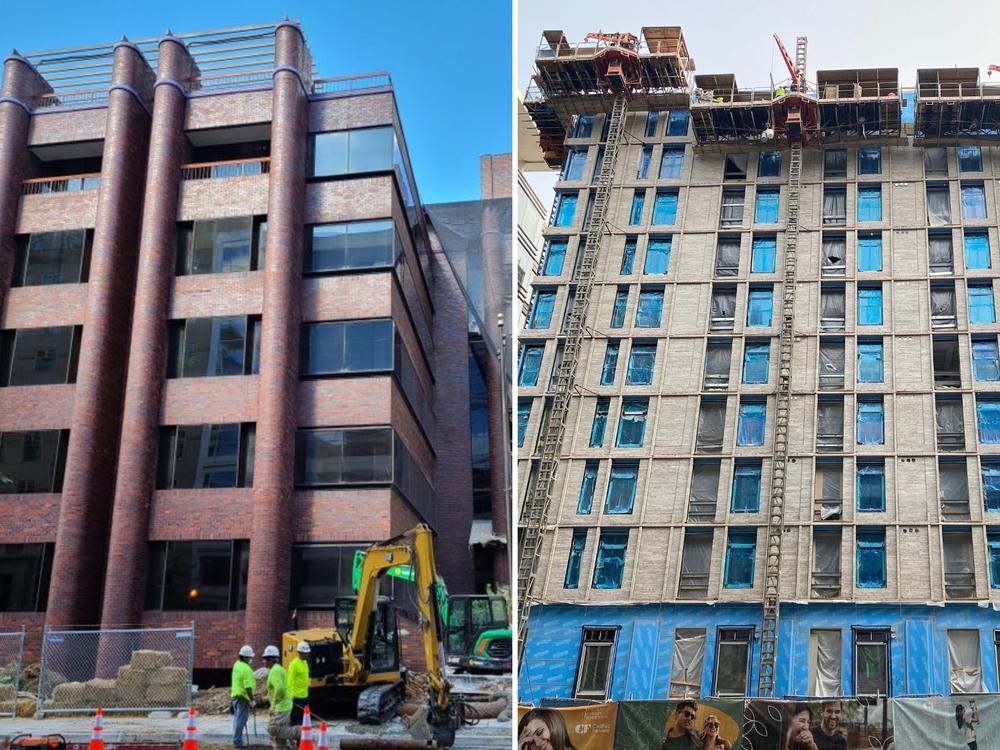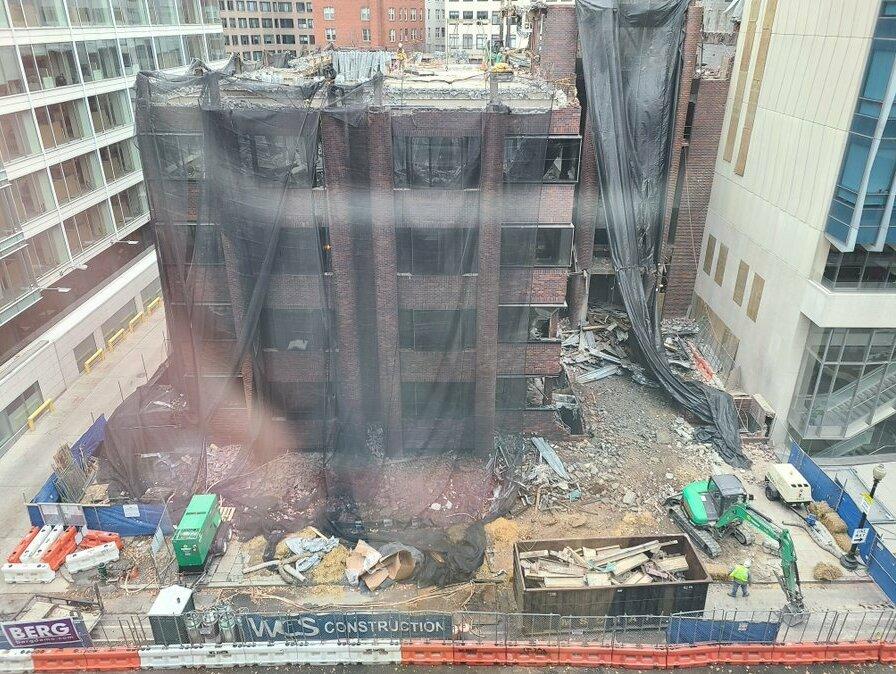Section Branding
Header Content
Turning unused office space into housing could solve 2 problems, but it's tricky
Primary Content
If you walked past 1313 L St. in Washington, D.C., a few years ago, you would've seen a 1980s-style office building. The headquarters for the National Association for the Education of Young Children was red brick, with big windows and the organization's logo plastered across the side.
But if you walk by the same spot this time next year, you could be looking at a newly finished apartment building with sleek gray siding and a rooftop patio.
The project is one example of a growing real estate trend — converting old, unused office space into apartments. These conversions seem like a win-win: turning a plethora of barely used office space into desperately needed urban housing.
But converting offices into apartments is easier said than done. And while it's easy to imagine the process behind conversions, like adding in walls and plumbing, it gets complicated.
Out-of-the-way and older office buildings are targets for conversions to apartments
City centers are struggling to fill the gap left by commuters who now come into the office a few days a week, if at all. These workers were patrons of downtown businesses, from restaurants to dry cleaners. Without them, offices are desolate and businesses are shuttering.
To save these downtowns, cities are trying to turn unused office space into housing. San Francisco officials are making efforts to adjust current building codes and get rid of extra fees for office-to-residential projects. In Washington, D.C., the mayor wants to put more money into a tax relief program for office conversions.
Even cities like New York, where many companies have offices, vacancy is becoming a problem. Office vacancy in Manhattan was 15% in May, according to real estate investment firm CBRE.
"The commute has crushed a lot of people's willingness to trudge into the office every day," said Jason Alderman, the head of real estate giant Hines' New York office. He said Hines' buildings within a half-mile of the major transit hubs Grand Central and Penn Station have higher occupancy rates than others.
But, he added, "buildings that are catering to people — making it exciting to come back to the office or easy to come back to the office — are winning."
As demand for other office buildings decreases, Hines is considering office-to-apartment conversion projects. Alderman said the company is actively bidding on properties.
Too many rules, not enough incentives
Converting an office building into a residential space can be difficult, and that's when the building already has the right structure to work with. A lot of buildings don't — they're too wide, or have the wrong kind of windows, which makes conversion more expensive. But politics may be a greater factor in a project's success.
Even as cities try to entice developers to turn office buildings into apartments, they've also put up obstacles. In New York, strict zoning rules already impact which buildings — and in some cases, how many floors — can be converted into housing. Rezoning a property for residential use can be timely and costly. Alderman said approval also requires support from politicians, who often add requirements for affordable housing a developer may be unable to afford.
Right now, many developers in New York are adjusting after the expiration of a state tax exemption for builders who include affordable housing in their projects. The exemption played a large role in multifamily housing construction in the city. According to a study from NYU's Furman Center, 70% of multifamily properties built from 2010-2020 took advantage of the tax exemption.
Alderman said, while he hopes it is reinstated, "That would be both [the city and the state] cooperating together and waving a magic wand. And I'm not holding my breath that that's going to happen anytime soon."
In Washington, D.C., the government has exempted downtown projects from affordable housing requirements to encourage developments like the 1313 L St. building, which is being converted by architecture firm Hickok Cole.
"The economics of these projects, they're not slam dunks," said Guilherme Almeida, the firm's director of high performance design. "They actually are pretty complex and expensive projects to execute, so [an affordable-housing requirement] would have disincentivized the creation of more housing downtown."
Turning offices into homes would be better for the environment than starting from scratch
Building construction produces 11% of global carbon emissions, according to the World Green Building Council. It can take up to 80 years for a new, energy-efficient building to offset its own carbon emissions, according to a study by the National Historic Preservation Fund's Preservation Green Lab. The fund's former sustainability director, Patrice Frey, said reusing an existing building can reduce emissions dramatically.
"I don't think we can think of our resources as so expendable that we can just continue to build and abandon or build and demolish," Frey said. "We've really got to think more sustainably about using what we've got."
She said one reason behind the commercial real estate and housing crises is that over the last few decades, developers built with one use in mind, whether it be office space or residential. She's hopeful that in time, the industry will shift to designing buildings that are more adaptable to changing needs.
"That mentality, that thinking about flexible, adaptable space has to be integrated into everything we construct into the future," Frey said. "Because we've got to be designing for centuries, not for decades."
Copyright 2023 NPR. To see more, visit https://www.npr.org.


